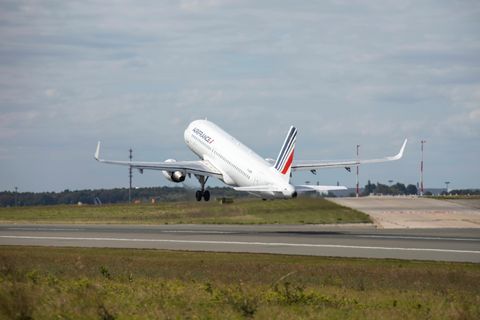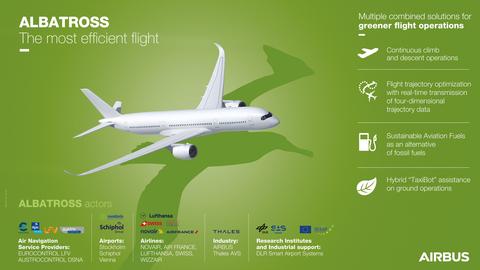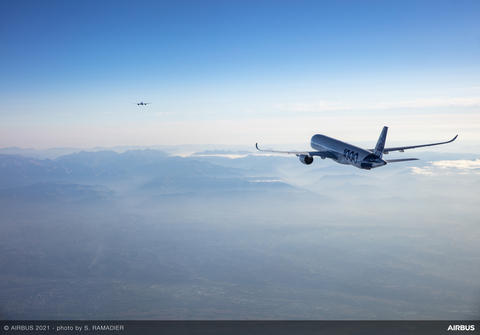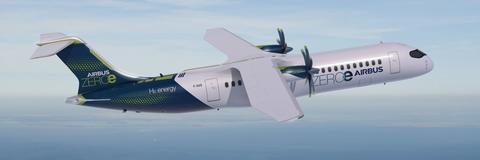Operational improvements are another lever we can use to reduce our environmental impact. By optimising flight trajectories and having better coordination with our air traffic management partners, we are able to contribute to reduce average CO2 emission per flight by 5-10%, as defined by the European ATM Master Plan.
Improving day-to-day flight operations
We leverage air traffic management solutions and ground-and-flight operational measures to reduce the impact of air travel on the environment. Some of these practices include:
- Continuous climb and descent operations
- Flight trajectory optimisation
- Hybrid on-ground operations
For several years, Airbus has participated as an active member of the Single European Sky Air Traffic Management Research (SESAR) Joint Undertaking. This initiative works to modernise air traffic management systems, which is key to realising these potential improvements. More than 500 demo flights were performed to test multiple air traffic management solutions and further demo flights are planned as technologies evolve.
Taking optimisation to the next level
We have a variety of levers we can deploy, including services and software upgrades such as Descent Profile Optimisation (DPO). The DPO function optimises the flight trajectory and maximises the time spent at an efficient cruise level, resulting in fuel-saving benefits.
We are also working on our own pioneering solutions to further optimise air traffic management. One such solution we have tested is fello'fly, which has been inspired by the flight patterns of migrating geese.
Fello’fly uses wake-energy retrieval to boost environmental performance. By coordinating flight patterns so that one aircraft follows another, the second aircraft can benefit from free lift, resulting in the need for less engine thrust and a wake-saving of up to 10% CO2 emissions. This could be particularly effective during long-haul flights, on routes where aircraft already travel close together.
Airbus is continuing the fello’fly research with GEESE, that will develop a concept of operations based on continental traffic flows from Europe to Asia and Europe to the Middle East. It will also define the requirements on operations and systems using the traffic flows from Europe to North America.
HERON project to increase fuel efficiency in aviation takes flight

Airbus and partners target more energy efficient flights



